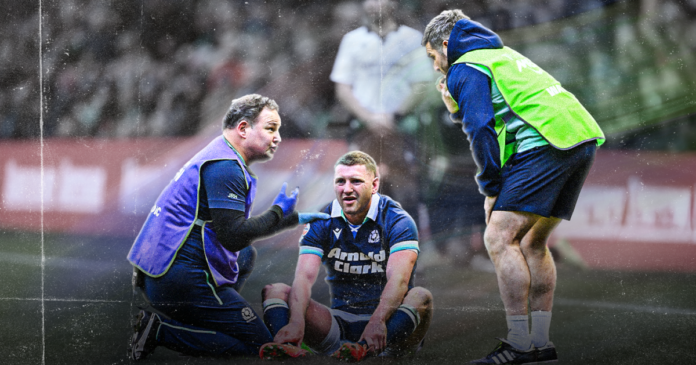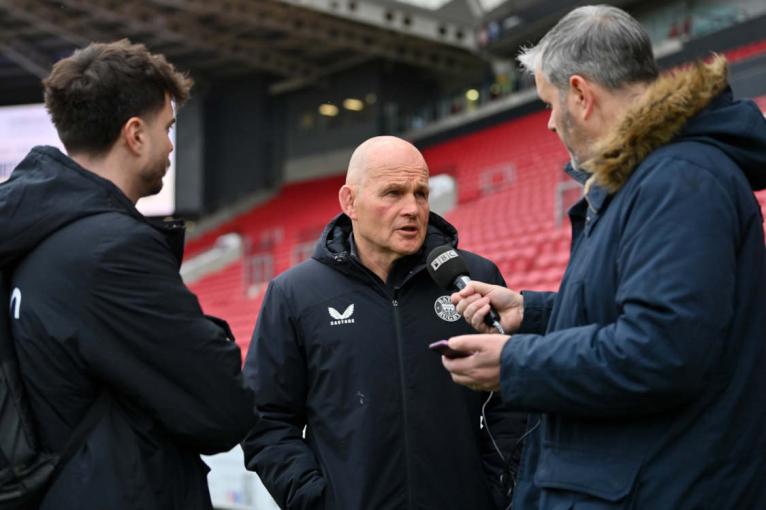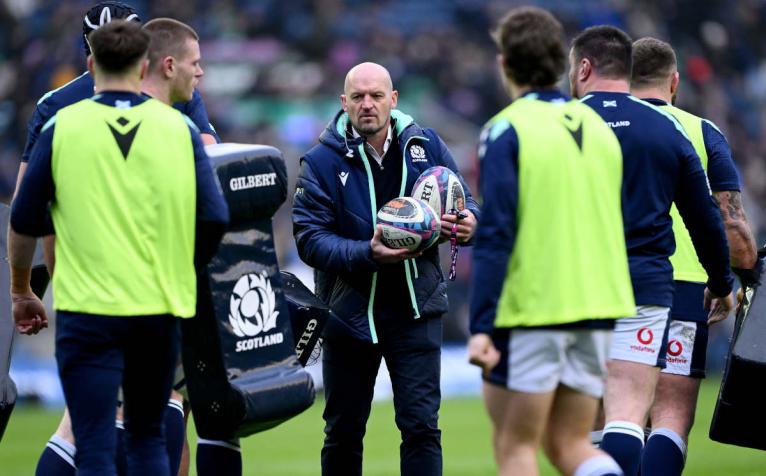
[ad_1]
The pause for breath in the Six Nations offers a chance to reflect on the highlights of the opening fortnight of which there have been many. While Ireland set the pace on the field Scotland are the championship leaders off it. Their decision not to allow Finn Russell back on at Murrayfield after his clash of heads with Darcy Graham was an enlightened one.
The temptation must have been extreme. The game against the Irish was 20-minutes old, Scotland had started dreadfully and they needed inspiration from somewhere. Russell was their co-captain and most influential player.
There were also the practicalities of their bench situation. Scotland had only picked two back replacements and one of them was about to go on for Graham who was on a stretcher heading to hospital. If Russell had to be replaced too that left the backline cupboard bare for the remaining hour of the game.
The Bath stand-off had passed his Head Injury Assessment. He was ready on the sidelines to return the pitch, itching to go but Scotland’s assistant coach Peter Horne sensed something was not right with him and radioed up to Gregor Townsend in the coaching box who made the call.
Darcy Graham receives medical treatment after a clash of heads with Finn Russell during the Six Nations game against Ireland (Photo by Stu Forster/Getty Images)
Russell would not be returning. His well-being had to come first.
Back at Bath, they were seriously impressed. “We’re delighted with the way that he was treated,” said Andy Robinson, the former Scotland coach who is now assistant coach at The Rec. “To make that decision in the heat of the battle was very courageous but it was the right decision for him. Credit to the management of Scotland for doing it.”
The English club-Celtic country relationship has not always been a cordial one but on the Russell issue there was sweet harmony.
It was a management team fulfilling its duty of care to their player to the letter and an illustration of where rugby has moved to in its attitude to concussion.
For Luke Griggs, the chief executive of the brain injury association Headway, it was worthy of a public pat on the back.
Rugby often talks about taking a safety-first approach with the advice ‘if in doubt sit it out’ and although Finn Russell passed the concussion protocol, we know it is not foolproof, especially as symptoms can evolve and develop over several hours.
Luke Griggs, chief executive, Headway
“Too often we highlight examples of bad practice and criticise coaches for not prioritising player welfare, so when we see this positive step being made it’s only right that we sing their praises,” he said.
“Rugby often talks about taking a safety-first approach with the advice ‘if in doubt sit it out’ and although Finn Russell passed the concussion protocol, we know it is not foolproof, especially as symptoms can evolve and develop over several hours so we commend the Scotland management team for making this decision which prioritises player safety and sets a good example for grass-roots rugby too.”
Rugby union’s concussion journey has been a painful one and it isn’t over. The group action against the sport’s governing bodies lodged by past players has still to reach court. There has though undoubtedly been an evolution in the outlook towards concussion across the game. On a practical level independent match-day doctors, longer stand-down periods and smart mouthguards have all been introduced in recent years.
 Bath’s assistant coach Andy Robinson was impressed with how Scotland dealt with Finn Russell’s welfare in a high-pressure situation (Photo Patrick Khachfe/Getty Images)
Bath’s assistant coach Andy Robinson was impressed with how Scotland dealt with Finn Russell’s welfare in a high-pressure situation (Photo Patrick Khachfe/Getty Images)
But Sale club doctor Imran Ahmed, who has worked in the Premiership for 13 years, says the biggest change has been in attitudes.
“There’s definitely been a cultural shift,” he said. “With the increased awareness and education everybody is just more understanding about it as a pathology. Rugby is doing everything it can to make sure players who are playing a very combative sport are doing so as safely as they can be.”
“People are more understanding of not only the importance of head injuries but the nuance within assessing and managing them. If someone isn’t right it should always be the correct decision to keep someone off and I think everybody is understanding that nuance now. There is always that ability to clinically overrule something if you feel a player isn’t right.”
Players want to be out on the field – that will always be the case – but knowing what they know now about the dangers of long-term damage they also recognise the need to protect their own brain health.
That was not always the case.
“As a player I just wanted to get back on the field and play. If we had a head knock we just got on with it. It was probably to our detriment that we pushed ourselves to do that,” said Robinson. “The understanding of the long-term effects of concussion has really helped the game and players to understand what is at stake.”
Concussion is a complex and emotive issue but if coaches like Townsend are taking selfless decisions that prioritise the welfare of their players, the game has to be on the right track.
Ahmed reports a sea change in how players coming into professional rugby now view the issue.
“We have a generation of players who are growing up now in that environment of head injury awareness,” said Ahmed. “This generation have been part of the process where the protocols have been developed and their exposure to head injury consultants and the online work they do means it is a lot more at the forefront of their minds. That helps us as well.”
Concussion is a complex and emotive issue but if coaches like Townsend are taking selfless decisions that prioritise the welfare of their players, the game has to be on the right track.
 Gregor Townsend has put the welfare of his players front, middle and centre (Photo by Stu Forster/Getty Images)
Gregor Townsend has put the welfare of his players front, middle and centre (Photo by Stu Forster/Getty Images)
“I think we’re in a good place but being professional is all about looking at ways to improve things further,” said Ahmed. “It would be lovely if we could get an objective black and white test to say you are concussed or you aren’t – that would be the ideal and would make everyone’s lives a lot easier – but until we reach that point we are reliant on having good, experienced clinicians who know their players and understand the risks of playing professional rugby. And we are all eager to make sure everything is done as well as it can be.”
Scotland are putting Russell through the post-concussion return-to-play protocols even though he passed his initial HIA1, which only assesses risk to continue in the game. An HIA2 is more detailed than HIA1, and takes place immediately post match, and if required, an HIA3 takes place 36 hours after the game. Whatever the results, he will be stood down for a minimum of 12 days.
He could still play against England in the Calcutta Cup match in round three of the Six Nations but the Scottish medical team will be monitoring his progress closely at their squad camp in Spain. There will be no shortcuts, guaranteed.
[ad_2]
Copyright for syndicated content belongs to the linked Source link

